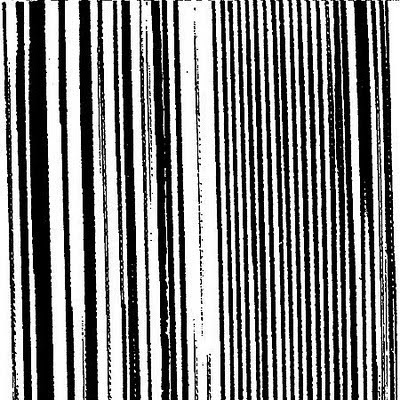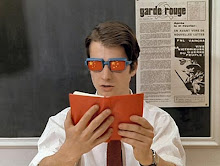Some adjectives that apply to the aura that surrounded The Dead C’s subterranean existence at the dawn of the ‘90s: mysterious, dark, foreboding, shambolic. At this current time the band are justifiably legendary (if still underappreciated) in u-ground music circles, but in their earlier days as a very left field New Zealand low-fi noise-rock trio they flew under the radar of all but the most discerning listeners. Previous to The Dead C’s tenure on U.S. label Siltbreeze, if you came across a review of one of their releases in the fanzine press it was almost certain to be a glowing notice of admiration, not due to any sort of consensus from the field but instead because the only scribes actually writing about them were the few people who simply couldn’t resist searching for the band’s output, of which many were cassette releases that frankly felt quite indifferent toward the idea of self promotion (in contrast to the deliberate purposefulness of documentation): releases dribbled into the States and could be procured with a little luck through mail order channels or from the racks of clued in shops, and along with a distinct and raw visual aesthetic that often drew upon guitarist Michael Morley’s woodcut artwork came the lingering aura of a reversal in the modern consumerist norm. The Dead C didn’t come to you hoping for acceptance; instead, if you were intrigued by their existence, finding them required some searching, a little effort. And joining up with Siltbreeze increased the band’s visibility only somewhat. HARSH 70’S REALITY was issued as a double-LP in ’92, and didn’t get a truncated CD release until around five years later. While it is tempting to say that hard line adherence to the varied qualities of format limited their popularity, with some consideration I feel that line of thinking is folly. The marriage of Siltbreeze founder Tom Lax’s defiantly and pleasantly screwed vibe and The Dead C’s uncompromisingly abstract free-rock was a shrewd intertwining of sensibilities. It would’ve done nobody any favors to have used CD bins clogged with the fallout of the overzealous promotion of their music to an always unpredictable indie marketplace. And the stature of this record slowly rose to masterpiece levels in the annals of noise-rock anyway, indeed becoming a cornerstone of the sort of organic, flowing formlessness that’s been a major component in much of the new millennium’s noisy goings-on. There is probably no better bathe-in-it-or-reject-it statement of purpose than the opening side long excursion of “Driver UFO”. Sounds drift in like storm clouds, threatening and unpredictable, with both feedback and distortion asserting and retreating, rising and falling, fading away or abruptly stopping, creating a loose and fascinating tapestry where the rain ultimately never bursts forth but a strange fog rises instead and envelops the surroundings, becoming incredibly dense before eventually dissipating into the ether. What a grandly twisted twenty-two and one-half minutes. Not everything included here is that shapeless and huge, though. Side two begins with “Sky”, and ragged bit of rocking that could be mistaken for some lost demo track from ‘80s subterranean Cleveland. “Love” basically lands between the two extremes, with string damage and brittle drumming slowly cohering into an almost groove, and it’s here that the occasionally cited comparisons to early Fall border on the explicit. The 2nd LP begins with “Sea Is Violet”, where the levels of guitar overload reach mind-melting highs and the drums attain a stunted, staggering momentum, and based on the primal thrust of this track if the agreement with Siltbreeze hadn’t happened, The Dead C could’ve just as easily fit on the Massachusetts label Twisted Village (who also released an LP by Gate, another of Michael Morley’s bands, so maybe I’m just stating the obvious). “Baseheart”, the middle of Side D’s three tracks, opens with a guitar riff so ominous it begins to feel like the soundtrack to the climax of an ultra low-budget action movie flickering on the backside of my eyelids: slow motion like Peckinpah, but tight, direct, energetic and sleazy ala early Ferrara, you know? Along the way it adds some wickedly broken Jandek-ian vocals, spectacular bursts of knotted and frayed guitar splatter, and a splendid slow build from the drums. This leads into “Hope”, where the music continues in a Corwood-like vein, combining the bent vision of outer-Texas with a hazy slumbering gait that, to me at least, approaches the far-left end of the early ‘80s UK DIY spectrum in its strung-out bedroomy density. The attention to texture is severe, though thoroughly appropriate, and is a well-considered conclusion to a lasting, uncompromising work. This is probably my favorite release by The Dead C, though the various editions of DR503 and TRAPDOOR FUCKING EXIT aren’t far behind, and those unfamiliar with the expanse of their maw that are attracted to the untiring candle flame of Sonic Youth’s experimental side should step right up to the plate and swing. Free-rock doesn’t get any more major than HARSH 70S REALITY, and as time hurtles forward and more bands shake off a slavish reverence to structure, the status of this masterwork has nowhere to go but up.
The Dead C live at Johnny Brenda's Philadelphia, PA October 12 2008



No comments:
Post a Comment